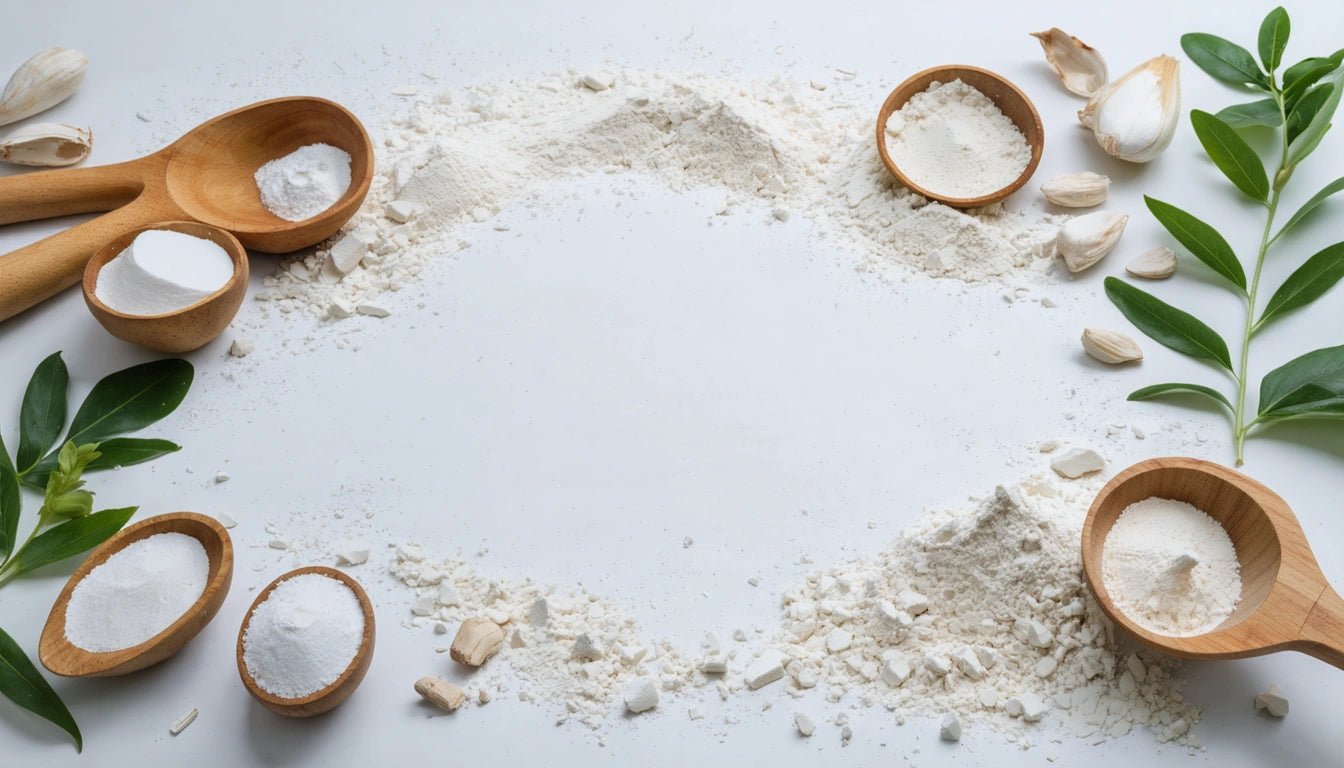Table of Contents
Understanding Kaolin Clay: Composition and Measurement Conversion
Kaolin clay stands as one of the most versatile natural materials used across multiple industries. From cosmetics to ceramics, this fine white clay offers unique properties that make it invaluable for both industrial applications and DIY projects. Understanding its composition and how to properly measure it ensures optimal results in whatever application you choose.
What is Kaolin Clay: Composition and Properties
Kaolin clay, also known as china clay, is a hydrated aluminum silicate derived from the mineral kaolinite. Its chemical formula is Alâ‚‚Siâ‚‚Oâ‚…(OH)â‚„, indicating its composition of aluminum, silicon, oxygen, and hydroxide. What makes kaolin distinct is its fine particle size, typically ranging from 0.1 to 4 micrometers, giving it a smooth texture when processed.
The clay forms through the weathering of aluminum silicate minerals, particularly feldspar. This natural process, called kaolinization, occurs over thousands of years in warm, moist climates with good drainage. The resulting material is typically white or off-white, though impurities can create variations in color including pink, light yellow, or light brown tints.
Key Properties of Kaolin Clay:
- Low plasticity compared to other clays
- High refractory properties (heat resistance)
- Chemically inert with a pH of approximately 4.0-7.0
- Non-abrasive with fine particle size
- Low shrink-swell capacity
- Excellent absorbent qualities
Measurement Conversion: How Many Grams in 64oz of Kaolin Clay
Converting volume measurements to weight for materials like kaolin clay requires understanding its density. For those wondering how many grams are in 64oz of kaolin clay, we need to consider both the type of ounce being referenced (fluid or weight) and the density of kaolin clay.
Standard kaolin clay has an approximate density of 2.6 g/cm ³. However, when purchased commercially, the powdered form typically has a bulk density of around 0.7-0.8 g/cm ³ due to air spaces between particles.
Conversion Calculation:
If we're referring to fluid ounces (volume):
1 fluid ounce = 29.57 mL
64 fluid ounces = 1,892.48 mL or approximately 1.89 liters
With kaolin's bulk density of approximately 0.8 g/cm ³:
1,892.48 mL × 0.8 g/mL = 1,513.98 grams
If we're referring to ounces by weight:
1 ounce (weight) = 28.35 grams
64 ounces = 1,814.4 grams
For most practical applications, 64 fluid ounces of kaolin clay powder weighs approximately 1,500-1,550 grams, while 64 ounces by weight equals 1,814.4 grams. This conversion is essential when following recipes for clay face masks or other applications where precise measurements matter.
Uses and Applications of Kaolin Clay
Kaolin clay's versatility makes it a staple across numerous industries and applications:
Cosmetic and Skincare Applications:
In skincare, kaolin is prized for its gentle exfoliating and oil-absorbing properties. It's commonly found in facial masks, scrubs, and soaps. Unlike harsher clays, kaolin is suitable for sensitive skin types. It's often combined with other ingredients like turmeric powder for enhanced benefits.
Industrial and Ceramic Uses:
The ceramic industry relies heavily on kaolin for creating fine porcelain and china. Its high firing temperature and white color when fired make it ideal for high-quality ceramics. In papermaking, kaolin serves as a coating and filler that improves paper brightness, smoothness, and printability.
Medicinal Applications:
Pharmaceutically, kaolin has been used in anti-diarrheal medications for its absorbent properties. It's also found in some digestive remedies and can be used as a tablet filler or coating agent.
Purchasing and Storage Recommendations
When purchasing kaolin clay, quality matters significantly. Food-grade or cosmetic-grade kaolin is recommended for skincare or internal applications, while industrial grades are suitable for ceramics and crafts. Many enthusiasts find that convenient organization trays help manage clay powders and other materials during creative projects, keeping workspaces clean and materials separate.
For storage, keep kaolin clay in airtight containers away from moisture. Glass or food-grade plastic containers work well. Label containers with weight measurements and purchase dates for reference.
Kaolin vs Other Clay Types: Comparative Analysis
Understanding how kaolin compares to other clay types helps in selecting the right material for specific applications:
Kaolin vs Bentonite Clay:
Bentonite clay has stronger absorption properties and higher plasticity than kaolin. While kaolin is gentle and suitable for sensitive skin, bentonite provides deeper detoxification but can be more drying. Bentonite also swells significantly when wet, unlike kaolin.
Kaolin vs French Green Clay:
French green clay contains iron oxides and decomposed plant matter, giving it a green hue and additional mineral content. It's more absorbent than kaolin and better suited for oily skin types, while kaolin remains the gentler option.
Kaolin vs Rhassoul Clay:
Moroccan rhassoul clay has higher silica content and stronger negatively charged molecules that attract positively charged toxins and impurities. It's more conditioning than kaolin but also more expensive.
Future Developments in Kaolin Clay Applications
The future of kaolin clay looks promising with emerging applications in sustainable materials and advanced technologies. Researchers are exploring kaolin's potential in developing eco-friendly packaging alternatives, addressing the growing demand for natural materials in consumer products.
Nanotechnology applications are also expanding, with kaolin nanoparticles showing promise in drug delivery systems and advanced coatings. As measurement precision becomes increasingly important in these applications, understanding conversions between different units like ounces, grams, and quart measurements will remain essential for both industrial and artisanal users of this versatile clay.
With growing interest in natural skincare and sustainable materials, kaolin's gentle properties and abundant availability position it as a key ingredient for future innovations in multiple industries.



















